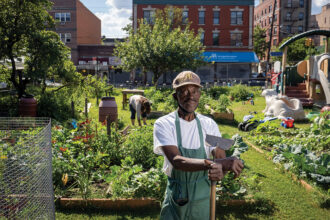For decades, urban farms and community gardens have helped meet demand for fresh and local produce. Urban farming creatively utilizes limited space, conserves land and transforms vacant lots or buildings into productive greenspaces. Farming in cities can be a rewarding way for communities to grow healthy food while receiving a wide range of other interrelated environmental, economic and social benefits.
SARE Outreach’s newest bulletin, Best Practices for the Sustainable Urban Farm, outlines strategies that urban farmers use to tackle the unique opportunities and challenges associated with urban production, including:
- Land access and security
- Soil remediation, health and nutrient management
- Water access and management
- Season extension and controlled environments
- Sustainable pest management
- Aquaponics and hydroponics
- Marketing in urban areas
- Nonprofit versus for-profit organizational models
Profiles of SARE grant recipients illustrate how urban farmers, researchers, educators and consumers can work together to foster entrepreneurship, improve food security and contribute to local economies while increasing biodiversity and reducing the distance food travels from field to table.
Download or order your free print copy of Best Practices for the Sustainable Urban Farm at www.sare.org/urban-agriculture or by calling (301) 779–1007. Best Practices for the Sustainable Urban Farm is available in quantity for free to educators for use in educational workshops, classes or tours.
